
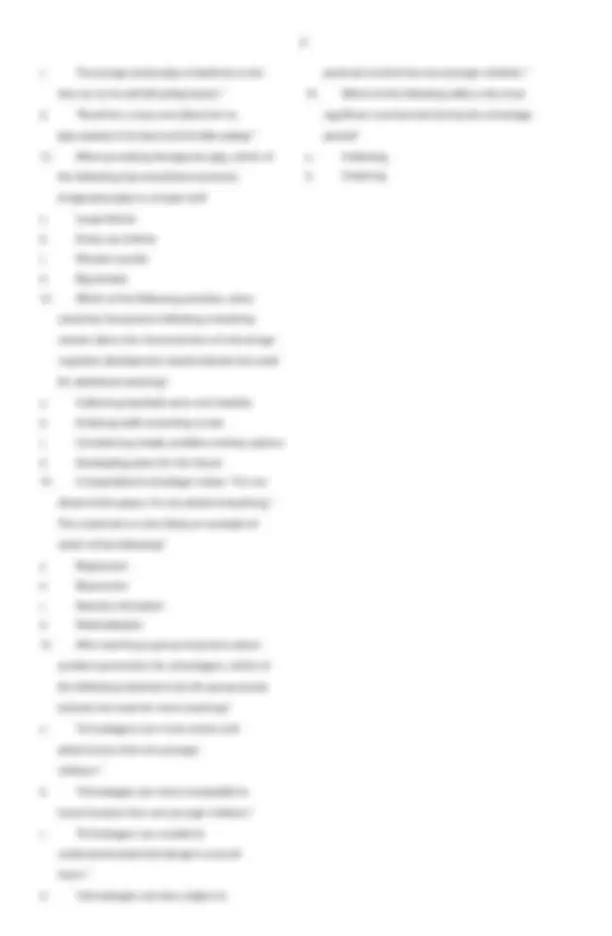
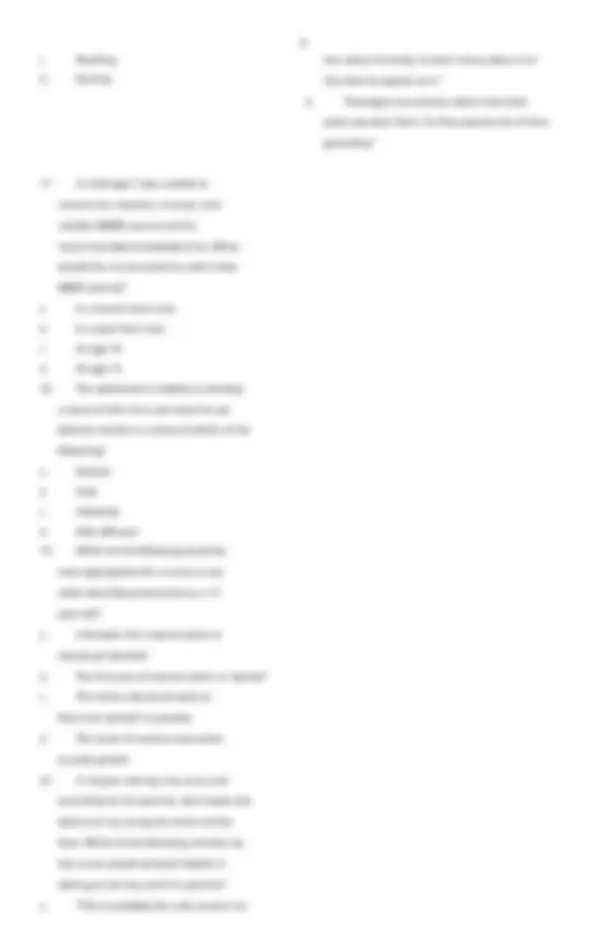
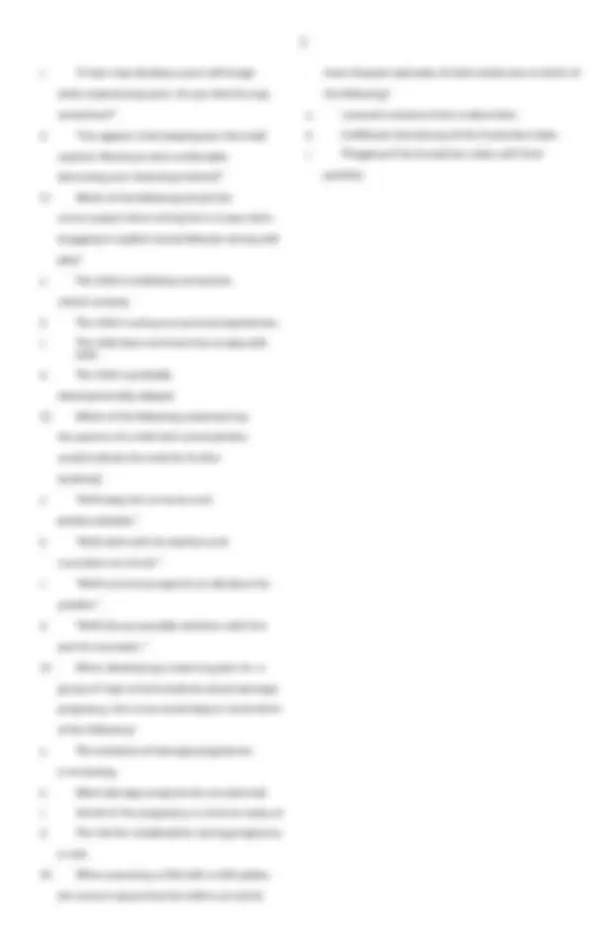
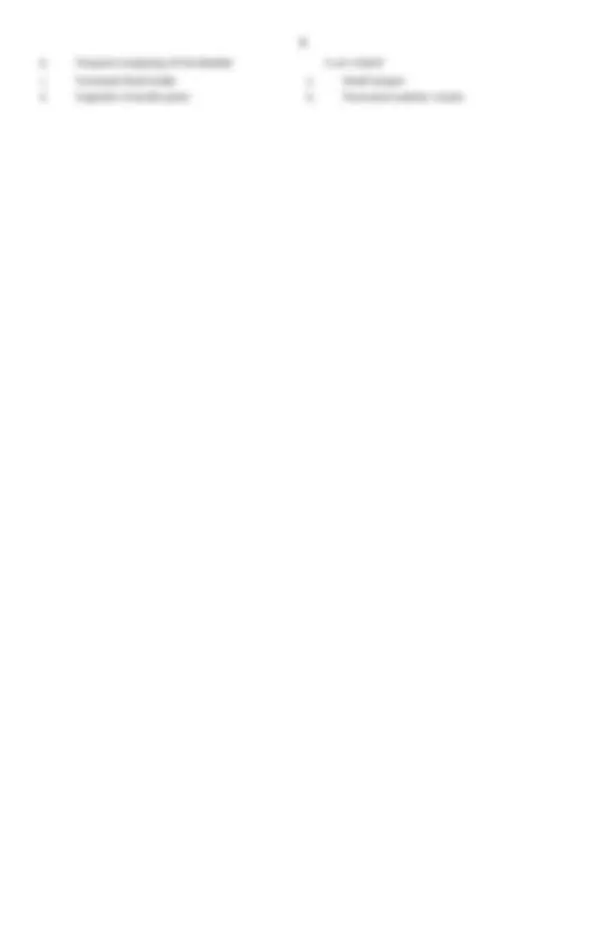
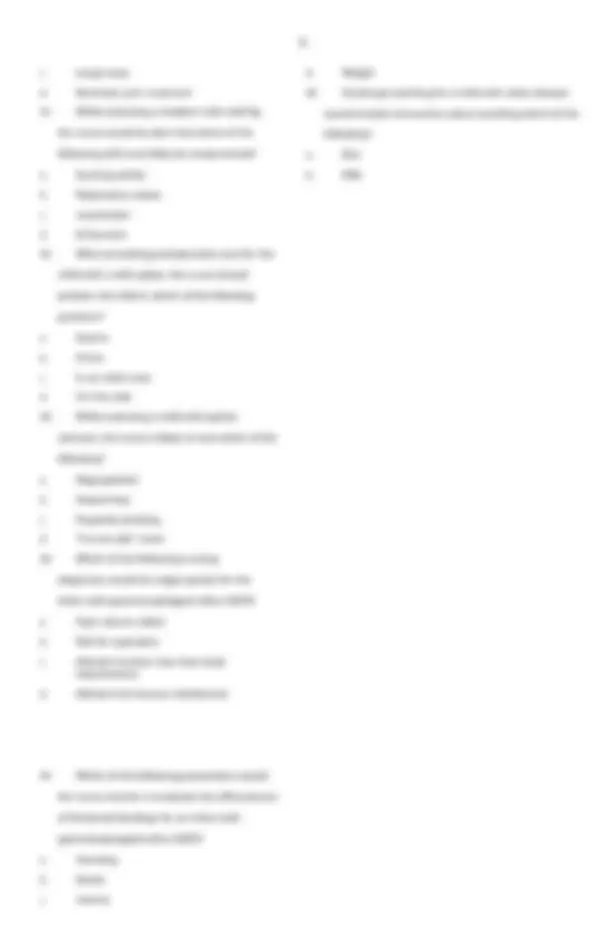
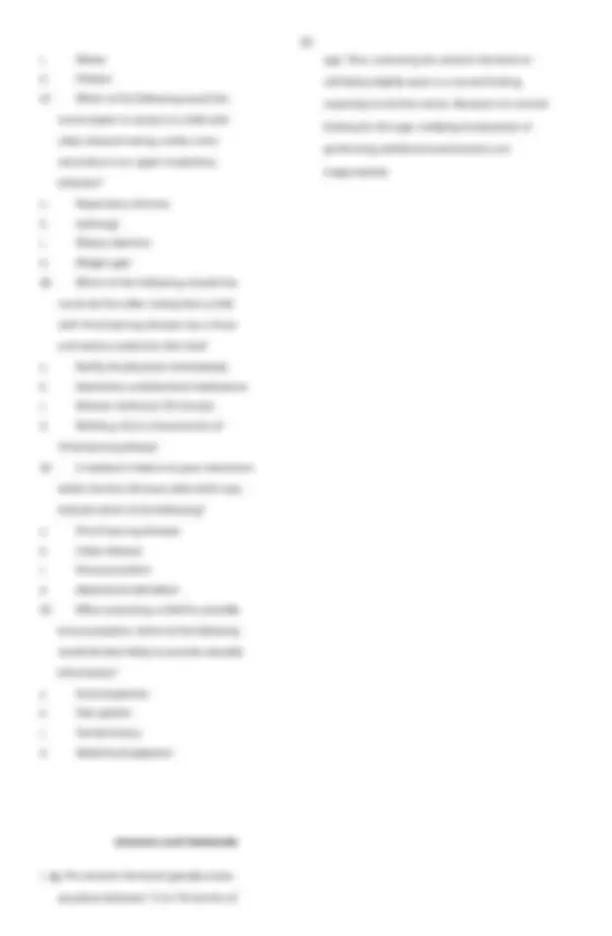
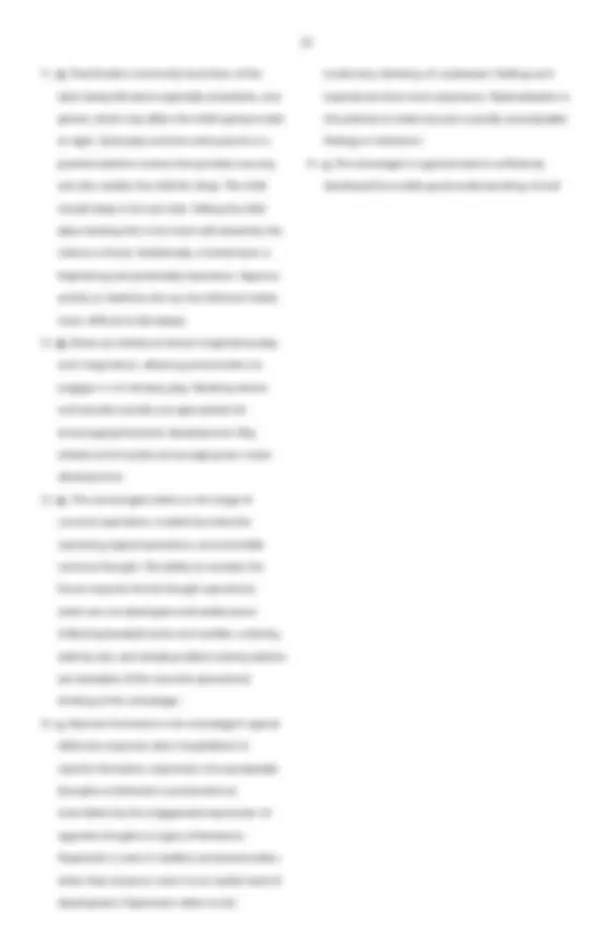
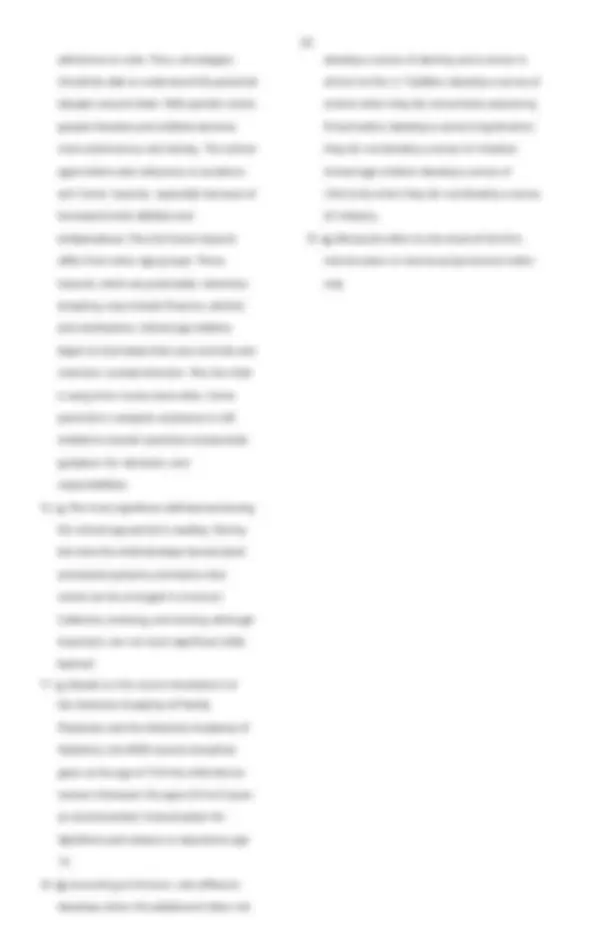
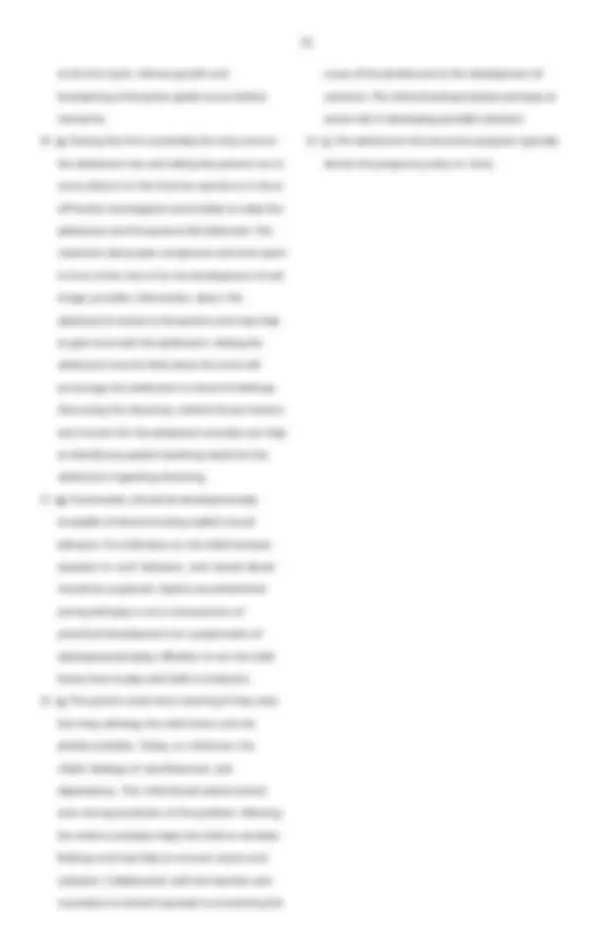
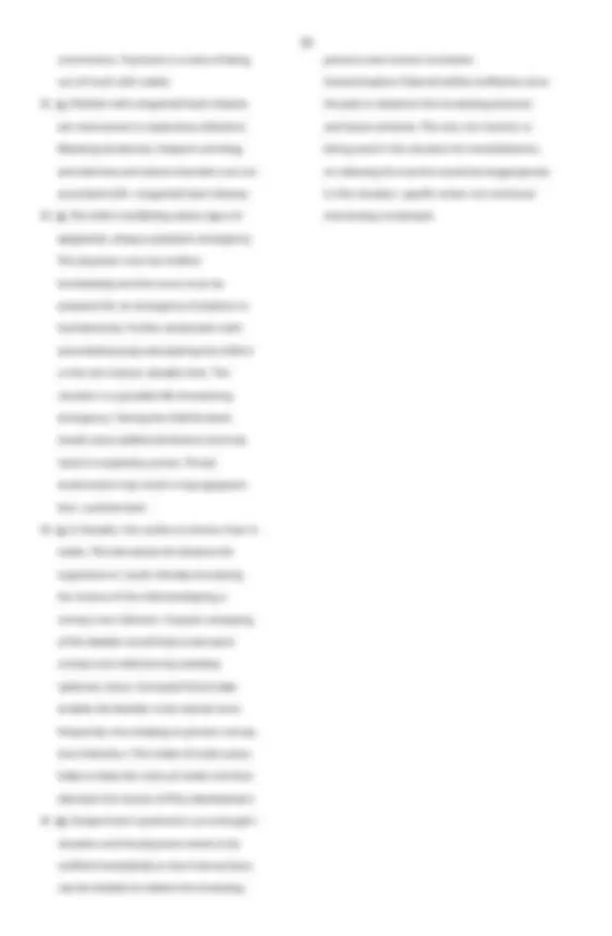
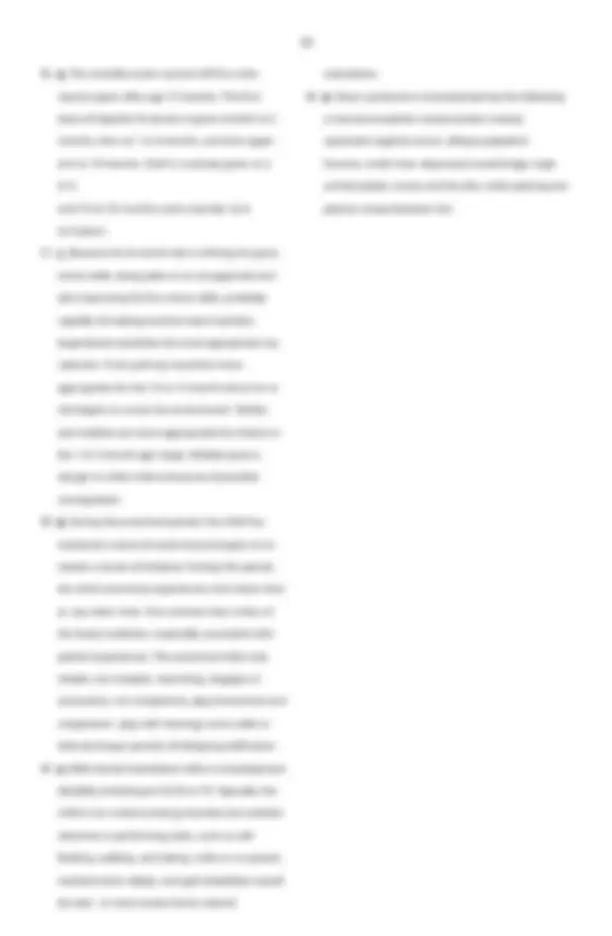
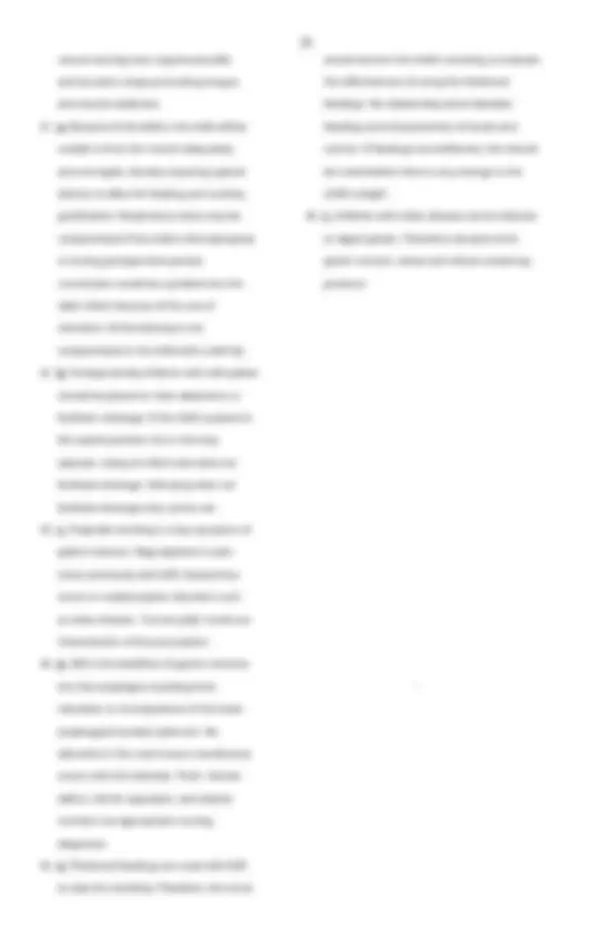
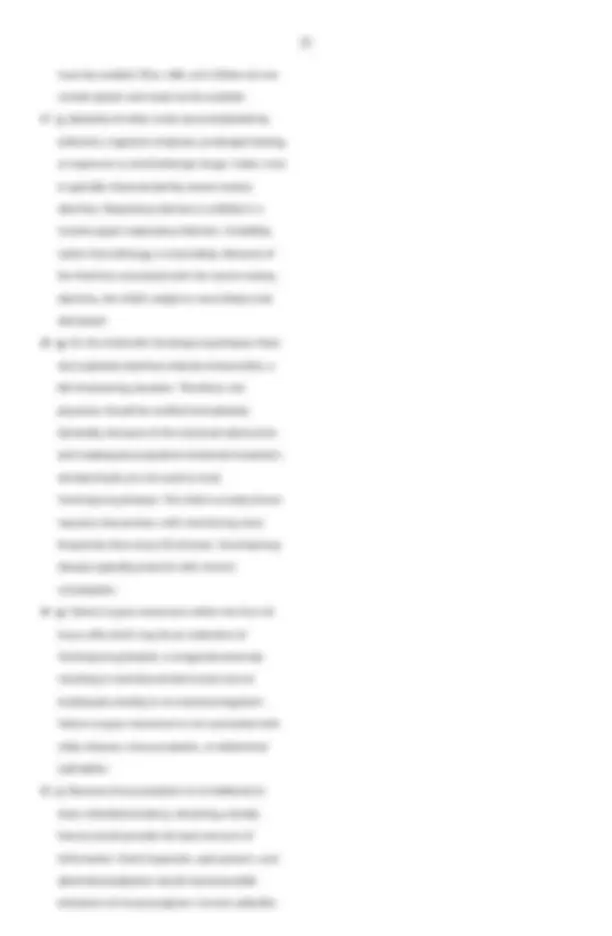
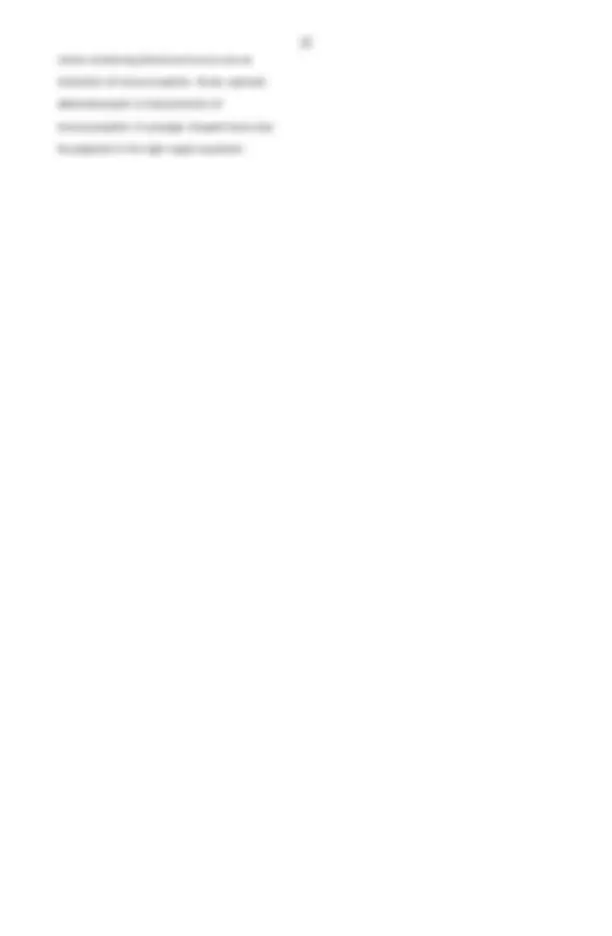
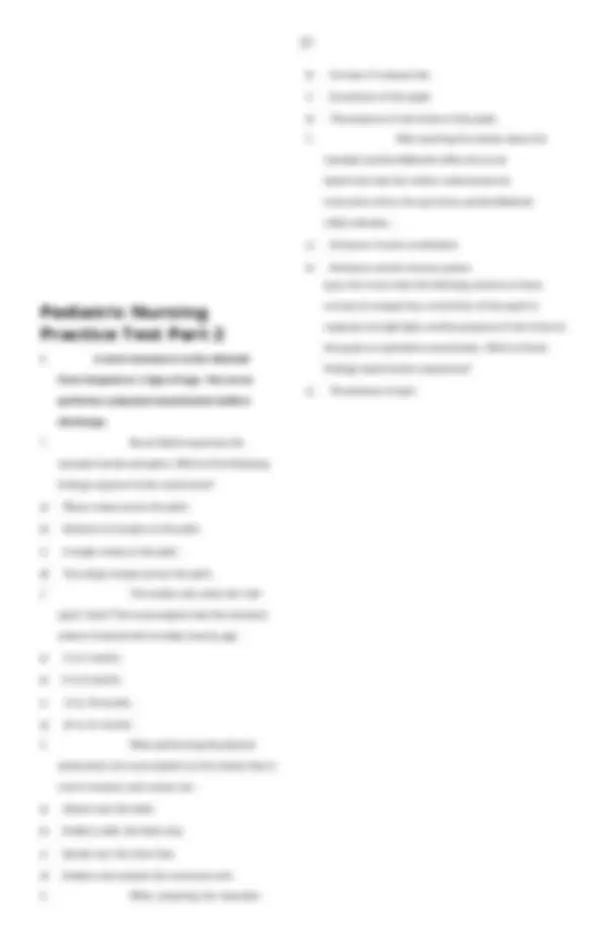
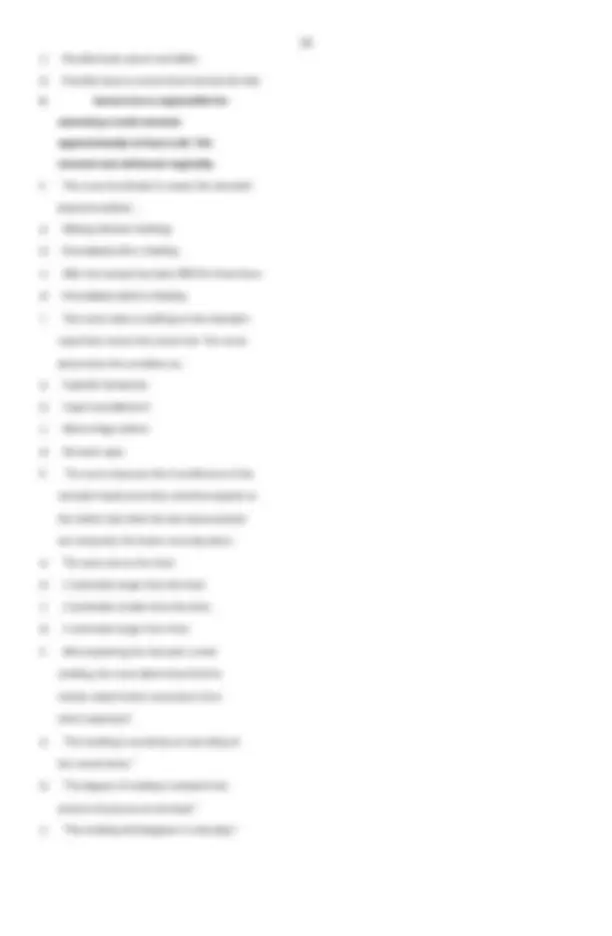
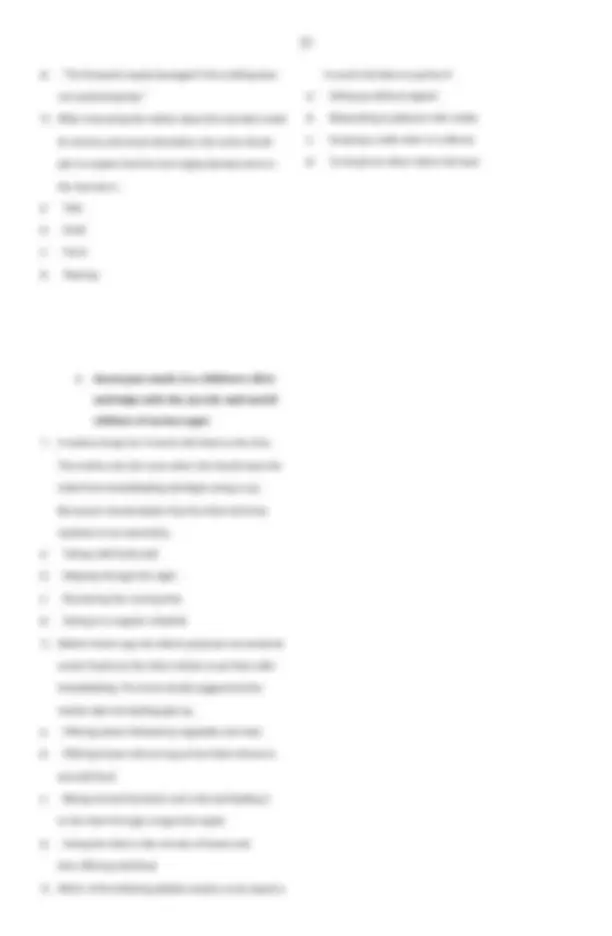
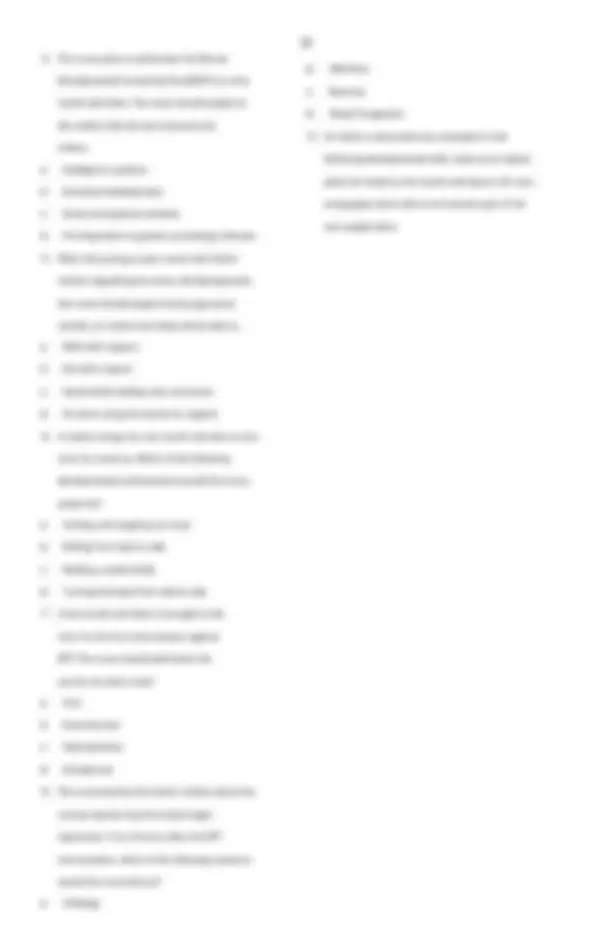
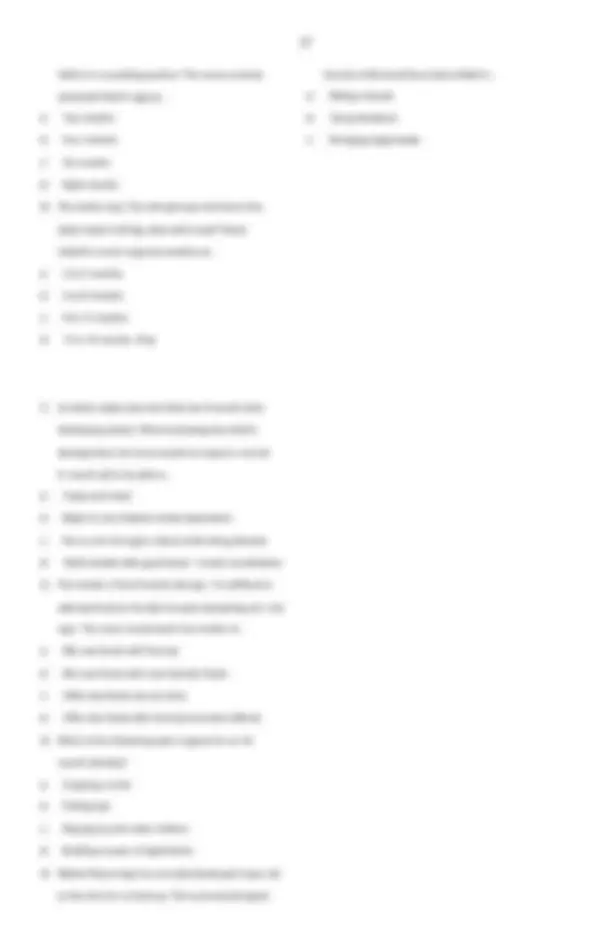
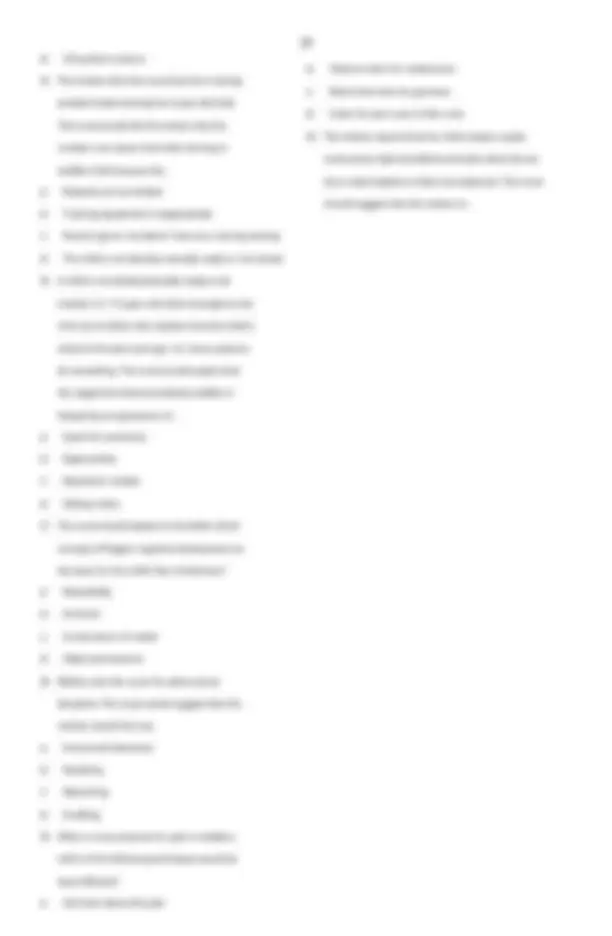
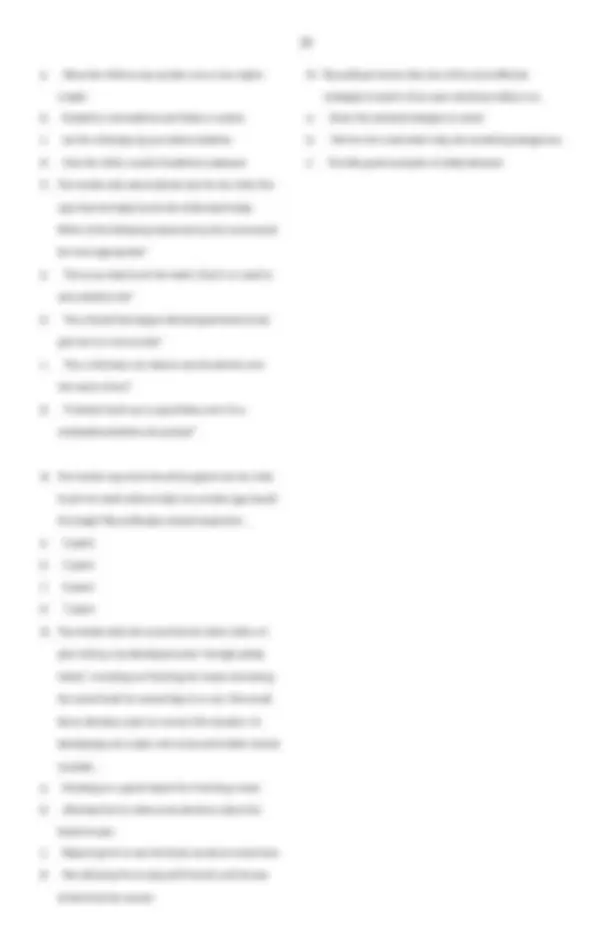
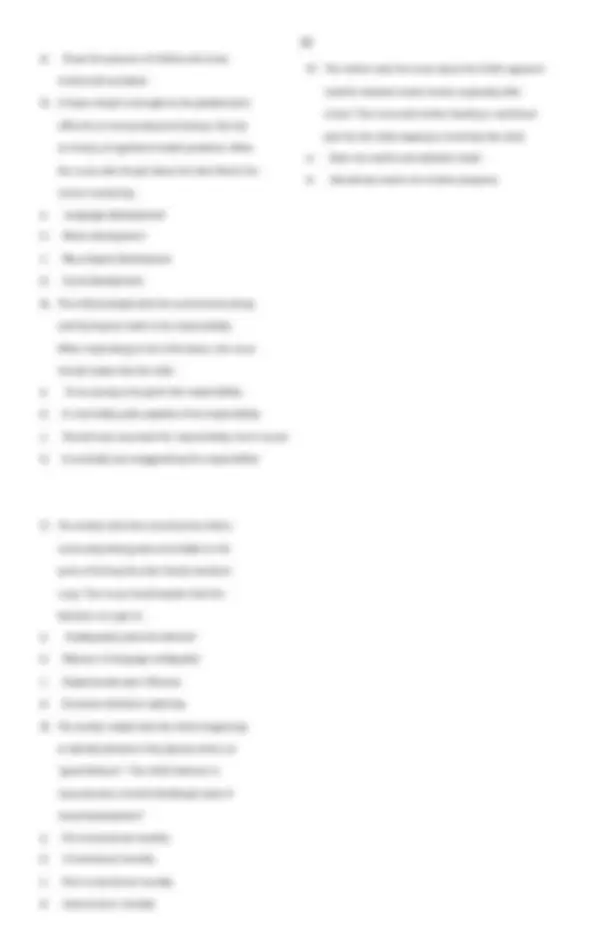
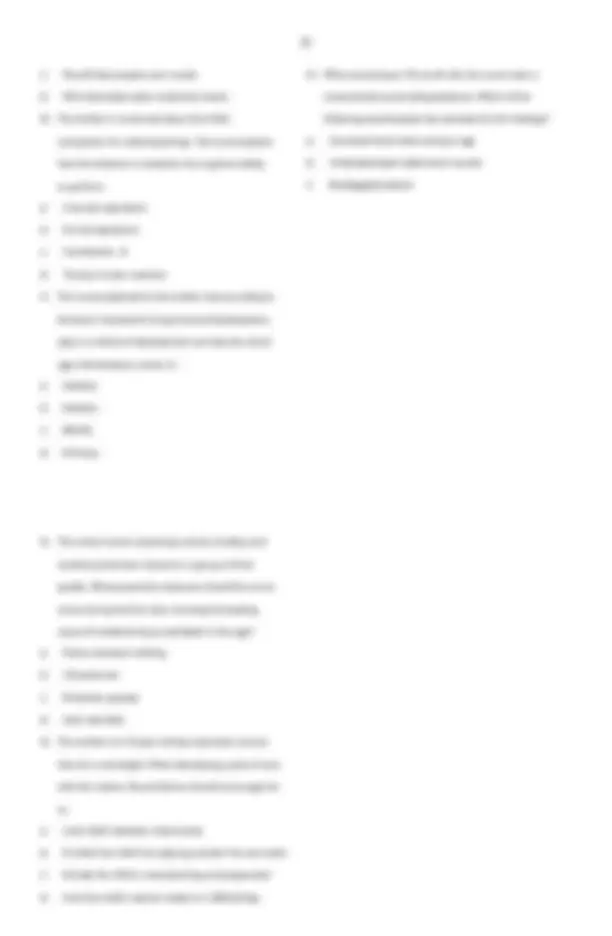
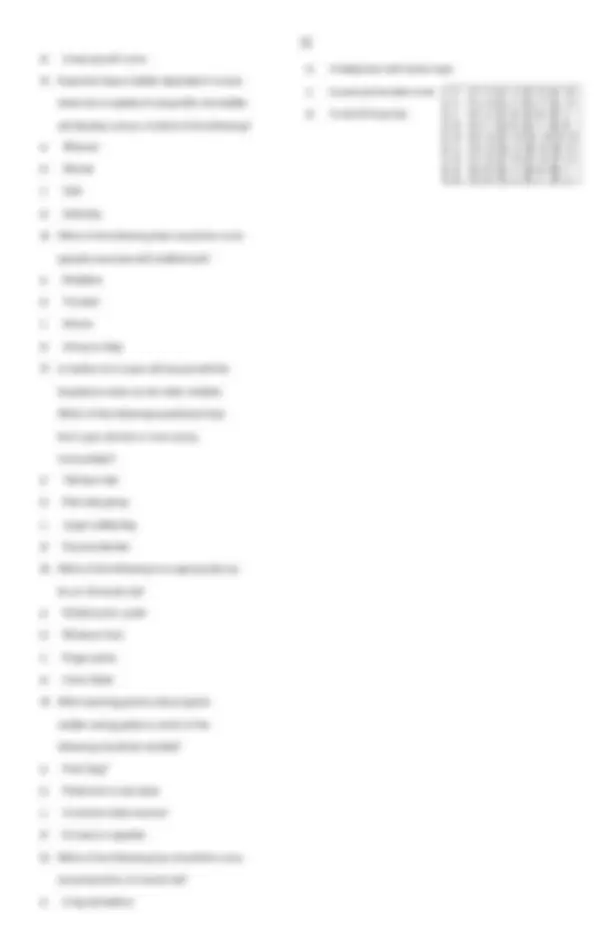



Study with the several resources on Docsity

Earn points by helping other students or get them with a premium plan


Prepare for your exams
Study with the several resources on Docsity

Earn points to download
Earn points by helping other students or get them with a premium plan
Community
Ask the community for help and clear up your study doubts
Discover the best universities in your country according to Docsity users
Free resources
Download our free guides on studying techniques, anxiety management strategies, and thesis advice from Docsity tutors
Pediatric Nursing Practice Test Part 1 and 2
Typology: Exams
1 / 33

This page cannot be seen from the preview
Don't miss anything!


























c. Reading d. Sorting
c. “A teen may develop a poor self-image when experiencing acne. Do you feel this way sometimes?” d. “You appear to be keeping your face well washed. Would you feel comfortable discussing your cleansing method?”
b. Schedule a follow-up visit to check for more bruises. c. Notify the child’s physician immediately. d. Do nothing because this is a normal finding in a toddler.
b. Frequent emptying of the bladder in an infant? c. Increased fluid intake a. Small tongue d. Ingestion of acidic juices b. Transverse palmar crease
c. Wheat d. Chicken
adherence to rules. Thus, schoolagers should be able to understand the potential dangers around them. With growth comes greater freedom and children become more adventurous and daring. The school- aged child is also still prone to accidents and home hazards, especially because of increased motor abilities and independence. Plus the home hazards differ from other age groups. These hazards, which are potentially lethal but tempting, may include firearms, alcohol, and medications. School-age children begin to internalize their own controls and need less outside direction. Plus the child is away from home more often. Some parental or caregiver assistance is still needed to answer questions and provide guidance for decisions and responsibilities.
recognition by a parent or health care provider may be crucial to timely initiation of prenatal care. The incidence of adolescent pregnancy has declined since 1991, yet morbidity remains high. Most teenage pregnancies are unplanned and occur out of wedlock. The pregnant adolescent is at high risk for physical complications including premature labor and low-birth-weight infants, high neonatal mortality, iron deficiency anemia, prolonged labor, and fetopelvic disproportion as well as numerous psychological crises.
priority nursing intervention would be to institute infection control precautions to decrease the risk of infection. Iron-rich foods help with anemia, but dietary iron is not an initial intervention. The prognosis of ALL usually is good. However, later on, the nurse may need to assist the child and family with coping since death and dying may still be an issue in need of discussion. Injections should be discouraged, owing to increased risk from bleeding due to thrombocytopenia.
second and big toes, hyperextensible and lax joints, large protruding tongue, and muscle weakness.